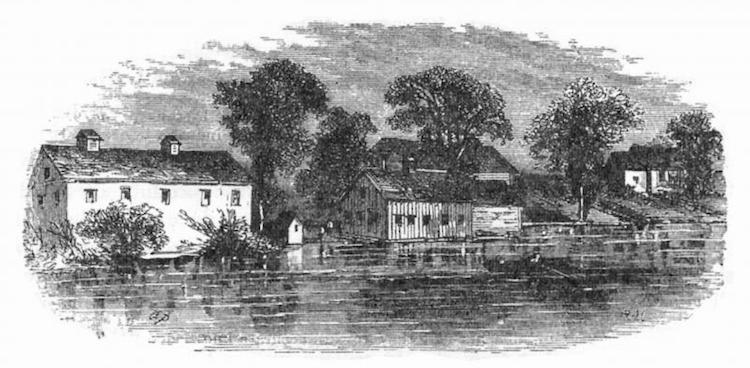
It was the summer of 1951, and Rome, N.Y., was holding an unprecedented celebration of cheese. Dairymen and -women from across the country had flocked to the town on the banks of the Mohawk River to pay tribute to the person who changed the face of the cheese industry forever: Jesse Williams.
On the final night of the weeklong festival, John H. Kraft, president of Kraft Foods, proclaimed that “pioneers like Jesse Williams… [fathered] the ideas and tools that have made America great.” This man, Kraft thundered, “exemplified the spirit which has made the dairy industry the largest agricultural industry in America.”
But who, exactly, was Jesse Williams, and why did Kraft—the processed cheese colossus—praise him?
Jesse Williams was born in Rome in 1798, the son of a Connecticut farmer who had served in the Revolutionary War. By 1835, Williams had started a family and ran a successful 265-acre farm. Like his contemporaries, Williams did it all—he raised cattle, sheep, and pigs; he grew grain and milled it. Most importantly, he made cheese.
At the time, cheesemaking was an individual affair. American farming families, most hailing from the English dairy regions of Suffolk, Essex, and Norfolk, had been crafting small batches of Cheshire- and Cheddar-style cheeses as part of their larger operations for more than two centuries. Williams, however, was not content to divide his attention, so he focused his time and energy on making cheese.
Williams knew that investing in cheese production would yield more money than simply growing wheat or using milk for butter (in fact, he produced so little of each that he actually bought them from the store, a shocking revelation to his father and neighbors). Shrugging off warnings of impending doom from naysayers, Williams rented out his farm for a season, and with his wife, Amanda, toured as many cheesemaking operations as possible. The couple interviewed countless farmers, farmhands, and dairymaids, hoping to better understand the ins and outs of making cheese.
When they returned, Williams’s cheese quality improved dramatically. His New York-style cheddar won first prize at the local county fair and commanded the highest prices in the market. By 1850, the farm was producing 25,000 pounds of cheese per year.
In 1851, William’s son George was married, and Williams decided to bring him into the business. At this moment, the cheese factory was born. Some say Williams tried to teach George all of his cheese secrets, but George couldn’t grasp the concepts and Jesse, frustrated, decided to do it himself and simply give George a share of the profits. Others believe George’s new wife, intimidated by the family’s cheesemaking prowess, suggested combining their output to avoid any embarrassing comparisons between her own mediocre cheese and the renowned cheese of her in-laws. In any case, the decision to process milk from father’s and son’s farms into a uniform product at a central location turned out to be the prototype of the modern industrial food system.
After Jesse Williams’s initial success with George’s milk, the crafty dairyman began talking up his neighbors and acquiring their milk, too. Soon, the Williams Cheese Factory was processing milk from 300 to 400 cows. In its first season of operation, the factory produced 100,000 pounds of cheese—more than five times the amount produced by the typical farmstead.
As news spread of Williams’s success, dairymen from across the country flocked to Rome to learn about the new process. Williams and his wife answered as many questions as they could to spread the gospel of factory cheese. Within 15 years, there were 500 such factories in New York alone.
Toward the end of his elegy for Jesse Williams, John Kraft asked the question: “Where would our nation be had not pioneers such as Williams dared to do things differently?”
Today some might answer with a resounding, “Better off! We should have maintained our traditional, craft dairy production!” Yet regardless of how we feel, Jesse Williams’s innovation marked the first step in the march toward modern cheese— and changed the world.
This article is excerpted from the author’s culture blog series, Real Cheese Product. Read more about the history and science of processed cheese here.




